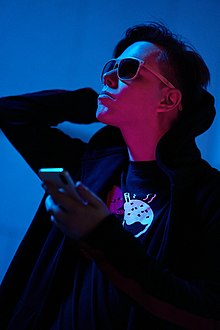
The handkerchief code is a system of color-coded cloth handkerchief or bandanas for non-verbally communicating one's interests in sexual activities and fetishes. The color of the handkerchief identifies a particular activity, and the pocket it is worn in identifies the wearer's preferred role in that activity. Wearing a handkerchief on the left side of the body typically indicates one is a "top" while wearing it on the right side of the body would indicate one is a "bottom". For example, a dark blue handkerchief indicates an interest in anal sex, and wearing it in the left pocket indicates a preference for being the penetrating partner. The code was first used in the 1970s in the United States, Canada, Australia, and Europe, by gay and bisexual men seeking casual sex or BDSM practitioners. Over time the colors and types of apparel in use have greatly proliferated.

In the signage industry, neon signs are electric signs lighted by long luminous gas-discharge tubes that contain rarefied neon or other gases. They are the most common use for neon lighting, which was first demonstrated in a modern form in December 1910 by Georges Claude at the Paris Motor Show. While they are used worldwide, neon signs were popular in the United States from about the 1920s to 1950s. The installations in Times Square, many originally designed by Douglas Leigh, were famed, and there were nearly 2,000 small shops producing neon signs by 1940. In addition to signage, neon lighting is used frequently by artists and architects, and in plasma display panels and televisions. The signage industry has declined in the past several decades, and cities are now concerned with preserving and restoring their antique neon signs.

The bisexual flag is a pride flag representing bisexuality, bisexual individuals and the bisexual community. The pink stripe represents attraction to the same gender, while the blue stripe represents attraction to the opposite gender. The purple stripe, the resulting "overlap" of the blue and pink stripes, represents attraction to all genders, including non-binary people and those of other gender identities.
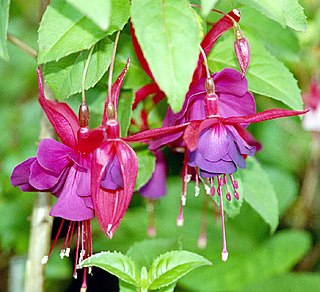
Fuchsia is a vivid pinkish-purplish-red color, named after the color of the flower of the fuchsia plant, which was named by a French botanist, Charles Plumier, after the 16th-century German botanist Leonhart Fuchs.

Lavender is a light shade of purple or violet. It applies particularly to the color of the flower of the same name. The web color called lavender is displayed adjacent—it matches the color of the palest part of the flower; however, the more saturated color shown as floral lavender more closely matches the average color of the lavender flower as shown in the picture and is the tone of lavender historically and traditionally considered lavender by average people as opposed to website designers. The color lavender might be described as a medium purple or a light pinkish-purple. The term lavender may be used in general to apply to a wide range of pale, light, or grayish-purples, but only on the blue side; lilac is pale purple on the pink side. In paints, the color lavender is made by mixing purple and white paint.
The following is a partial timeline of Crayola's history. It covers the Crayola brand of marking utensils, as well as the history of Binney & Smith, the company that created the brand and is currently a subsidiary of Hallmark Cards known as Crayola LLC.

Janelle Monáe Robinson is an American singer, songwriter, rapper and actress. She has received ten Grammy Award nominations, and is the recipient of a Screen Actors Guild Award and a Children's and Family Emmy Award. Monáe has also been honored with the ASCAP Vanguard Award, as well as the Rising Star Award (2015) and the Trailblazer of the Year Award (2018) from Billboard Women in Music.

The ArchAndroid is the debut studio album by American singer and songwriter Janelle Monáe, released on May 18, 2010, by Wondaland Arts Society, Bad Boy Records, and Atlantic Records. Production for the album took place at Wondaland Studios in Atlanta and was primarily handled by Monáe, Nate "Rocket" Wonder, and Chuck Lightning, with only one song without production by Monáe. She also collaborated for certain songs with Saul Williams, Big Boi, of Montreal, and Deep Cotton.

American singer Janelle Monáe has released four studio albums, four extended plays, 23 singles and eighteen music videos. Monáe debuted with an EP, Metropolis: Suite I , which had a modest commercial impact, peaking at number 115 on the Billboard charts in the United States. In 2010, Monáe released her debut studio album, The ArchAndroid, through Bad Boy Records; it is a concept album sequel to her first EP. The album was nominated at the 53rd Grammy Awards for Best Contemporary R&B Album and peaked the number 17 on the Billboard 200. In March 2012, "We Are Young", a song by the band fun. on which Monáe makes a guest appearance, reached the top of the Billboard Hot 100, her first appearance in the chart. Monáe released her second album, The Electric Lady, on September 10, 2013, peaking at number five on the Billboard 200 and producing four singles. Her third album, Dirty Computer, was released on April 27, 2018. In December 2018, the album received a Grammy Award nomination for Album of the Year.

"Q.U.E.E.N." is a song by American recording artist Janelle Monáe featuring the singer Erykah Badu. It was released on April 23, 2013, as the lead single from Monáe's second studio album, The Electric Lady. Stylized in the form of question and response, each line of the song has Monáe expressing her thoughts on subjects ranging from sexuality to religion. Prince, a mentor to Monáe, called the music video for "Q.U.E.E.N." the best music video of 2013.

Kit Sebastian Connor is an English actor. He gained recognition for starring as secondary school student Nick Nelson in the Netflix teen series Heartstopper (2022–present). He won the inaugural Children's and Family Emmy Award for Outstanding Lead Performance for the role. He appeared in the films Get Santa (2014), Rocketman (2019), and Little Joe (2019). He had a recurring role in the series Rocket's Island (2014–2015), and a voice role in the series His Dark Materials (2019–2022).
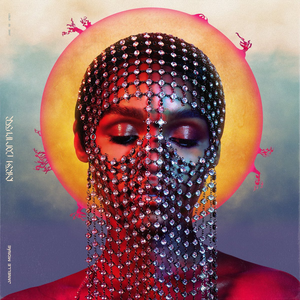
Dirty Computer is the third studio album by American singer and songwriter Janelle Monáe, released on April 27, 2018, by Wondaland Arts Society, Bad Boy Records and Atlantic Records. It is the follow-up to her studio albums The ArchAndroid (2010) and The Electric Lady (2013) and her first album not to continue the Cindi Mayweather Metropolis narrative.
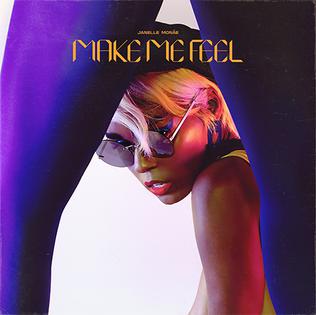
"Make Me Feel" is a song by American singer Janelle Monáe, released on February 22, 2018 as the lead single from her third studio album, Dirty Computer. This marks her return after a three-year hiatus. A departure from her longtime songwriting-production team of Nathaniel Irvin III and Roman GianArthur Irvin, Monáe co-wrote the song with Julia Michaels, Mattias Larsson, Robin Fredriksson, and Justin Tranter. Several critics compared it to the work of Prince, while Monáe herself has stated that Prince helped create sounds for the album, including for "Make Me Feel". It became Monáe's second single as a lead artist to chart on the US Billboard Hot 100, debuting at number 99 on the week of March 10, 2018.

"Pynk" is a song recorded by American singer and songwriter Janelle Monáe for her third studio album, Dirty Computer (2018). It features Canadian art pop musician Grimes and interpolates the song "Pink" by Aerosmith, with members of the band being credited as co-writers. Lyrically, the song continues Monáe's female empowerment theme previously expressed in "Django Jane". The third single from Dirty Computer, a music video for the song was uploaded to YouTube on April 10, 2018.

Heartstopper is a British coming-of-age romantic comedy-drama television series on Netflix, written and created by Alice Oseman and based on her webcomic and graphic novel of the same name. The series primarily tells the story of Charlie Spring, a gay schoolboy who falls in love with classmate Nick Nelson, whom he sits next to in his new form. It also explores the lives of their friends Tao Xu, Elle Argent, Isaac Henderson, Tara Jones and Darcy Olsson.

"Lamentis" is the third episode of the first season of the American television series Loki, based on Marvel Comics featuring the character Loki. It follows alternate versions of the character who escape from the mysterious Time Variance Authority (TVA) but get stranded in an apocalyptic event and must work together to survive. The episode is set in the Marvel Cinematic Universe (MCU), sharing continuity with the films of the franchise. It was written by Bisha K. Ali and directed by Kate Herron.
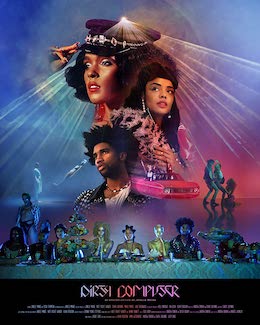
Dirty Computer is a 2018 dystopian musical science fiction film. It serves as a visual companion to Dirty Computer, the third studio album by Janelle Monáe. Billed as an "emotion picture", Dirty Computer tells the story of android Jane 57821 and her struggles as she "attempts to break free from the constraints of a totalitarian society that forcibly makes [her] comply with its homophobic beliefs". The film was produced by Wondaland, Monáe's multimedia production company, and was directed by Andrew Donoho and Chuck Lightning, with the music video portions of the film directed by Donoho, Lacey Duke, Alan Ferguson, and Emma Westenberg.
An Internet aesthetic, also simply referred to as an aesthetic or microaesthetic, is a visual art style, sometimes accompanied by a fashion style, subculture, or music genre, that usually originates from the Internet or is popularized on it. Throughout the 2010s and 2020s, online aesthetics gained increasing popularity, specifically on social media platforms such as Tumblr, Pinterest, Instagram and TikTok, and often were used by people to express their individuality and creativity. They can also be used to create a sense of community and belonging among people who share the same interests. The term aesthetic has been described as being "totally divorced from its academic origins", and is commonly used as an adjective.


